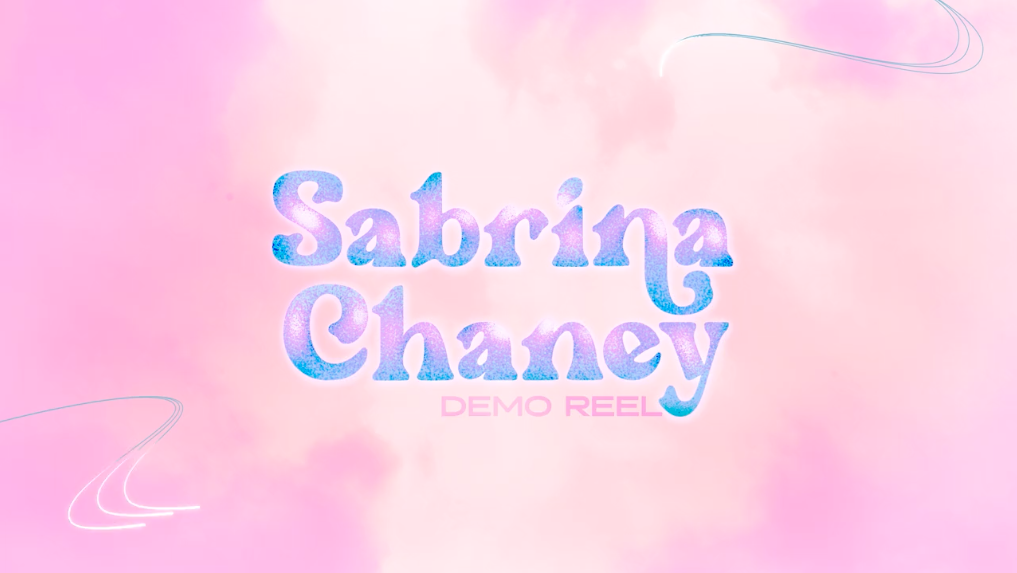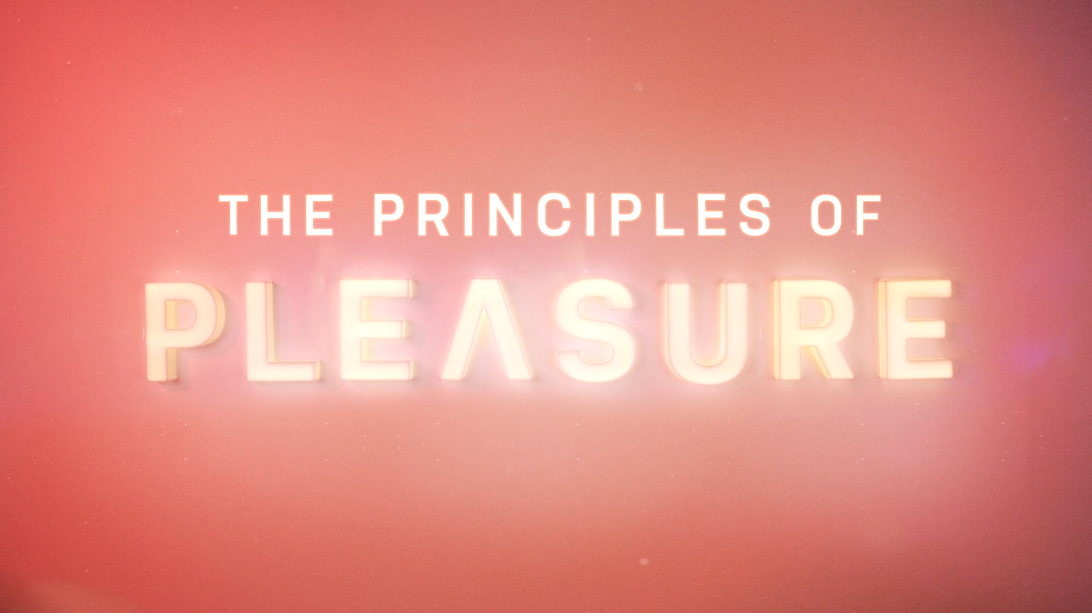Takeover Tuesday with Sabrina Chaney
An interview with Sabrina Chaney: Post-Production Lead at Mighty Oak in Brooklyn.
Q&A with Sabrina Chaney.
Read time: 5min
Mack Garrison:
Sabrina! Thanks so much for taking the time to participate in our Tuesday Takeover series. For those not familiar with you and your work, can you provide a little background on yourself and your creative style?
Sabrina Chaney:
Hey! I was born and raised in Houston, Texas. I went to school for Animation at the Savannah College of Art and Design. Now I work as the Post-Production Lead at Mighty Oak in Brooklyn, New York. My creative style is an amalgamation of all my interests: comics, animation, music videos, sculpture, and patterns. My main passion is stop-motion animation, so typically I like to imbue whatever I make with some kind of handmade element or texture.
Mack Garrison:
Oh man - love the word imbue! How did you initially get into the motion design industry?
Sabrina Chaney:
After I graduated from college I knew my portfolio wasn't where it needed to be. I was applying everywhere under the sun and it felt like every email was being swallowed into the void. Nothing really kicked off until I took a few School of Motion courses and re-made my portfolio and reel from scratch while living with my parents. You can see the result of that work here. Matt Vojacek from Made by Things was the first person to take a chance on me and give me an internship - working remotely long before Covid, might I add - and that started my freelancing career which I continued for three years after I moved to Brooklyn in 2017.
Mack Garrison:
There are so many talented folks in our industry, who are some of the people you look up to?
Sabrina Chaney:
The people who inspired me the most when I was starting out are all pursuing their own big projects these days. Isaiah Saxon of Encyclopedia Pictura is directing a movie for A24. Charles Huettner, Benjy Brooke, and Sean Buckelew are adapting the Scavengers short into a TV series for HBO Max. In general, I look up to people with big imaginations who do their own thing independently and feel compelled to share their work (remember Late Night Work Club? Bring that back!). Outside of mograph, I adore the work of Meredith Gran (of Octopus Pie and Perfect Tides fame) and Jonathan Bree. They are both master storytellers in their respective fields, and I feel transported by the worlds and characters they've created.
Mack Garrison:
You work at a really cool studio called Mighty Oak who specializes in stop motion, 2D, 3D and mixed media! What's it like working there?
Sabrina Chaney:
I had already built a working relationship with Mighty Oak while I was freelancing, and they were always my favorite client to work with. I joined the team full-time in March 2020. Everyone on the team is a creative problem-solver, and we bring our unique approach and point of view to every brief. Stop-motion is our favorite medium to work with and we bring that tactile sensibility to every project, whether it's animated in-camera or animated completely digitally. As the compositor, I get to solve a new puzzle every day, which makes my work rewarding and enjoyable. I love the variety of work that we attract, and I especially love when we have the opportunity to push ourselves with new techniques we've never tried before. Like a mighty oak, we are continuing to grow every year!
Mack Garrison:
What are some of your favorite projects you've had a chance to work on?
Sabrina Chaney:
During 2020 and shortly after I was brought on staff, we created animated sequences for Mary J Blige's My Life which is now streaming on Amazon. That project holds a special place in my heart because whether the world was falling apart or I had something going on in my personal life, I always had something beautiful to look forward to at work. It was also the longest-running project we had worked on as a team, so it felt good to practice consistency and surpass our benchmarks together as the months went by. We developed a painterly frame-by-frame 2D workflow using Procreate and After Effects, inspired by the work of our creative director Michaela Olsen. I can look back on what we made and feel proud of what we accomplished. I was also invited to the film premiere in Lincoln Center along with the rest of our team- and Mary J Blige herself was at the afterparty! We made direct eye contact! I'll never forget it.
Similarly, in 2021, we created animated sequences for the Netflix series Principles of Pleasure. Each episode has a different art direction depending on the given topic, and we used a mix of stop-motion animation with props, pixelation with human actors, collage, frame-by-frame 2D animation, and motion graphics to illustrate topics relating to sexual education and female pleasure. We used a lot of the lessons we learned during 2020 and applied it to the production of PoP. We harnessed the momentum of the previous year to create something fresh and different. Those projects combined offered us a lot of fun and challenging work during the pandemic, which is something I'm still grateful for.
Mack Garrison:
Looking at your reel, you've really done a phenomenal job with your compositing skills! Could you talk a bit about your approach in making a shot feel perfect?
Sabrina Chaney:
Consistency is key. It's not about whether a shot is perfect, it's about whether the shot feels believable. Compositing is a lot like being an illusionist who can do card tricks: of course we may know what lies up our sleeve, but all the audience sees is magic! What I love most about working in After Effects is that there are a thousand ways to achieve a desired result, so there is no "wrong" or "right" approach. It all boils down to the needs of each shot and making sure the hero product or character can shine without any distractions.
Mack Garrison:
What are some things everyone should think about when they're compositing animations?
Sabrina Chaney:
Compositing encompasses a lot of different techniques, including green-screening, rotoscoping/masking, special effects, motion graphics, color correction, and rendering. Each of those skills could be its own visual effects discipline with its own specialized software. I tend to keep everything as simplified as possible to avoid getting overwhelmed, and I find this practice also makes it easier if I need to pass off a shot to somebody else. By simplified I mean things like keeping my project folders organized, using only the most necessary layers in my timeline, and frequently reducing my project to trim down on unnecessary files inside of my .aep. I find that these small acts of tidying up help me stay focused on the compositing work that really matters instead of getting caught up in the weeds, overcomplicating things, and then causing trouble for myself later in a project when I can't make heads or tails of my project file.
Mack Garrison:
Your work and Might Oak's has a very hand-crafted feel. I'm curious what your thoughts are around the development of A.I. Are you worried about what it could do to the industry? And how do you think it will affect the stop motion space?
Sabrina Chaney:
Honestly, I'm very ambivalent and non-threatened by A.I. People have already been creating 3D animation that looks like claymation for years, and projects like The Lego Movie directly reference stop-motion animation techniques. Technically stop-motion has already been made obsolete. People simply love it too much to let it die! If A.I does have a place in the process of creating stop-motion animation, then it'll probably occupy a space much like rapid prototyping technology, which allowed Laika to make characters more expressive using 3D animated faces in Coraline and is now an industry standard practice.
Mack Garrison:
Any advice you'd give to the next generation of creatives?
Sabrina Chaney:
I grew up Extremely Online from middle school through college, migrating from deviantART to Tumblr to Twitter and Instagram in an effort to post and share my work. I never had much of an audience, and I found it more draining than energizing. At the end of the day, I'm not sure how much good it did when it came to actually getting work. By far the best networking connections I've made were from reaching out to people directly via email, using the Internet to do my own industry research, and meeting people face to face at in-person events. Your portfolio speaks for itself. If you feel pressured by social media, I recommend deleting your apps for a temporary period and dedicating the time towards things that inspire you without any plans to share what you've done. Maintaining some semblance of privacy can be intensely freeing, because you're allowed to make mistakes, learn, and experiment without subscribing to trends or comparing yourself to others.
Mack Garrison:
Anything else you'd like to add?
Sabrina Chaney:
I want to place a special shoutout to Panimation NYC! Panimation meetups were how I met many of my current friends and peers right after I moved to New York City when I didn't know a soul. Coming out of the pandemic, I learned how easy it can be to become isolated. It helps to get involved with a community of like-minded people who support each other.



